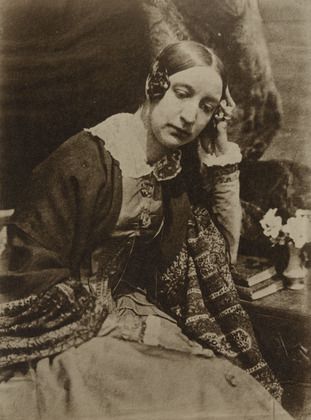Long exposure photography and the notion of ‘aura’
When I look at early portraits such as those by David Octavius Hill and Robert Adamson, I cannot help but feel that they capture an essence, an honesty that the modern snapshot so often fails to achieve. I see a sense of time and what Walter Benjamin referred to as the ‘aura’ of the person. There is a softness in the eyes, simply caused by blinking during long exposure photography and there is an absence of mimics and grimaces since any momentary facial movements could not be captured. So the face is captured in its most natural state in contrast to the modern snap shot which we are all too familiar with –in which we are often captured in unflattering split second mimics.
“The procedure itself caused the subject to focus his whole life in the moment rather than hurrying on past it: during the considerable period of the exposure the subject as it were grew into the picture, in the sharpest contrast with appearances in a snapshot…”
Walter Benjamin, A Short History of Photography published in 1931
Above left: David Octavius Hill with Robert Adamson. Lady Elizabeth Eastlake. c. 1844
Above right: David Octavius Hill (Scotland, 1802—1870) and Robert Adamson (Scotland, 1821—1848), Portrait of a Lady, c. 1845, salted paper print from a calotype paper negative.
Through the dissection of time, time itself is absent
The short exposure enables us to capture 'reality' - or as I might call it, a 'slice of reality' - in detail, but I feel it also removes a dimension of reality - the dimension of time. Time does not stop in our experienced reality and we are not able to stop a fraction of a second in our minds as the camera does. Time by its very nature is continuous. The short exposure reveals to us what we are actually unable to experience with our eyes, but through this dissection of time, time itself is, in most photographs, absent. The long exposure on the other hand allows movement to leave its mark, suggesting the passing of time which is closer to our experience of time.
“If, while resting on a summer afternoon, you follow with your eyes a mountain range on the horizon or a branch which casts its shadow over you, you experience the aura of those mountains, of that branch. This image makes it easy to comprehend the social bases of the contemporary decay of the aura. It rests on two circumstances, both of which are related to the increasing significance of the masses in contemporary life. Namely, the desire of contemporary masses to bring things “closer” spatially and humanly, which is just as ardent as their bent toward overcoming the uniqueness of every reality by accepting its reproduction. Every day the urge grows stronger to get hold of an object at very close range by way of its likeness, its reproduction.”
Walter Benjamin – Art in the age of Mechanical Reproduction, 1936
Riva Degli Schiavoni, Venice, 2007
Attempting to capture the aura of a place
“the withering of the aura thus corresponds to the destruction of the depth of subjective experience in modernity.”Walter Benjamin
When I first began taking photographs seriously I was often disappointed when returning from a shoot. Although I may have captured that place technically well and shown in a few images how it looks, I never felt that a photograph captured how it really felt when I was there.
In the same sense that Walter Benjamin wrote about the aura of people in portraits, I feel that landscape too has an aura. I want to capture a feeling of place and for me the obvious approach was to allow more time to be recorded by the camera. When walking through a landscape (or a city) I do not want to stand still and frame a moment but rather to allow the place and my journey through it be recorded on the film. I hope that through the long exposure onto film and my movement with the camera through a space, time is captured not as a momentary fragment, but as an impression which reveals the aura, the essence of that place.
Oxenhope Moor, Yorkshire - from the Uk Landscapescollection
Read more about David Octavius Hill and Robert Adamson:http://www.getty.edu/art/gettyguide/artMakerDetails?maker=1293
Read about Walter Benjamin here:http://ceasefiremagazine.co.uk/walter-benjamin-art-aura-authenticity/
View more work from my Venice serieshere
Please enter your email address below to receive updates about long exposure photography and related topics by Dominic Pote Fine-Art Photographer




